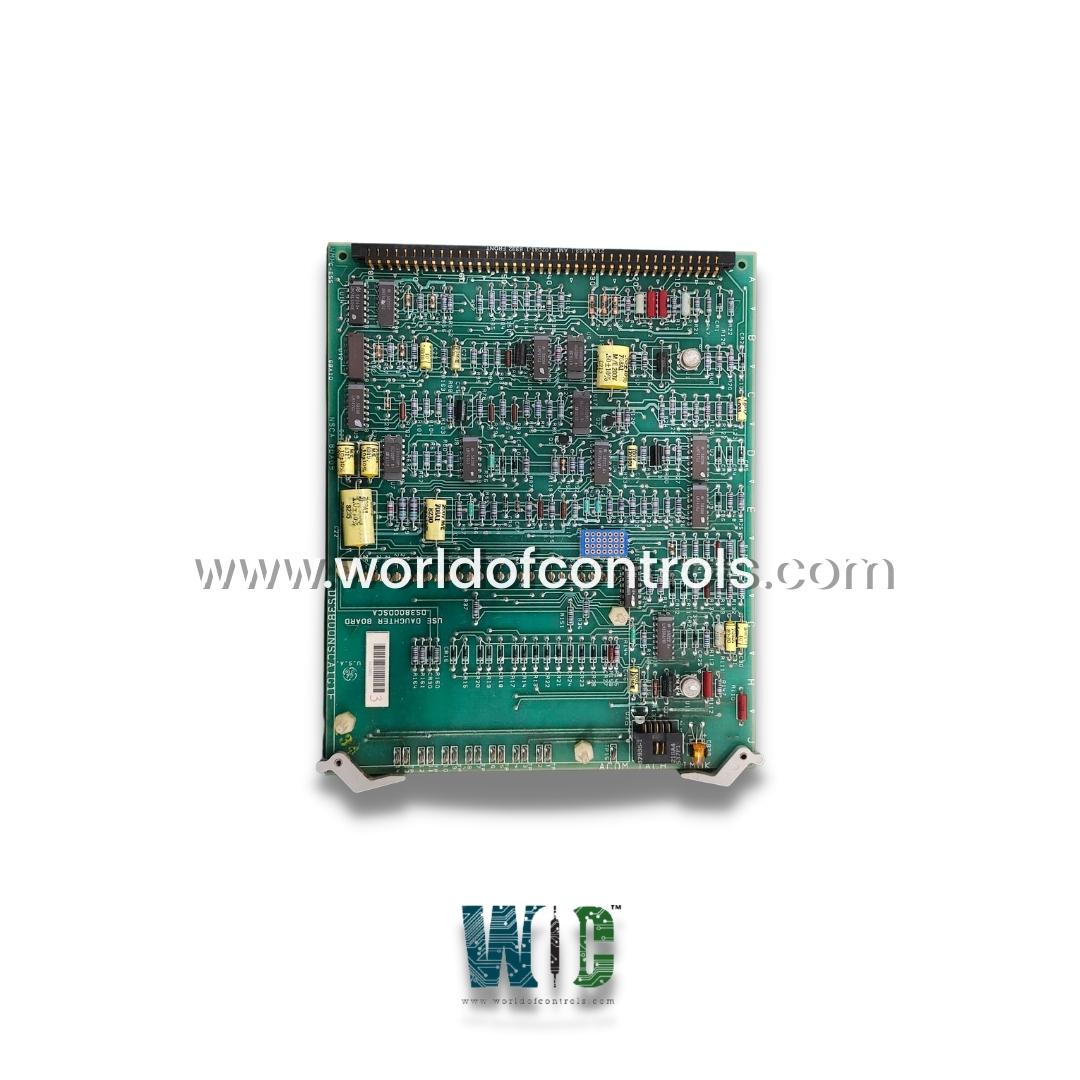SPECIFICATIONS
Part No.: DS3800NSCA1G1F
Manufacturer: General Electric
Country of Manufacture: United States of America (USA)
Product Type: Speed Current Regulator Auxiliary Card
Availability: In Stock
Series: Mark IV
Functional Description
DS3800NSCA1G1F is a Speed Current Regulator Auxiliary Card developed by GE. It is a part of Mark IV control system. The Speed Current Regulator Auxiliary Card is specifically engineered to regulate and control speed and current parameters within auxiliary systems integrated into the Mark IV control system. It plays a pivotal role in ensuring optimal performance and stability in auxiliary operations. It seamlessly integrates into the overall control architecture, contributing to the comprehensive control and monitoring capabilities of the system. Its compatibility and interoperability with other control system components enhance the system's functionality and efficiency.
Features
- Speed Regulation: One of the primary functions is speed regulation, whereby it controls the speed of auxiliary equipment within the system. By adjusting the speed parameters as per operational requirements, it enables precise and efficient operation of auxiliary machinery, ensuring optimal performance and productivity.
- Current Regulation: In addition to speed regulation, it facilitates current regulation, effectively controlling the flow of electrical current within auxiliary circuits. This feature ensures that the current levels remain within safe operating limits, preventing overheating and potential damage to equipment components.
- Advanced Control Capabilities: Equipped with advanced control algorithms and feedback mechanisms, offers sophisticated control capabilities, allowing for precise adjustment and optimization of speed and current parameters. Its adaptive control features ensure responsive and accurate control actions, enhancing system stability and reliability.
- Diagnostic and Monitoring Functions: Incorporates diagnostic and monitoring functions to provide real-time feedback on the performance of auxiliary systems. It continuously monitors key operational parameters, detects anomalies, and alerts operators to potential issues, enabling timely troubleshooting and preventive maintenance.
- Robust Design and Reliability: Built to withstand harsh industrial environments, it features a robust design and construction, ensuring durability and reliability in demanding operational conditions. Its ruggedized components and protective features enhance its longevity and performance, minimizing downtime and maximizing productivity.
Control System features
- Control Sections (R, S, T - RST): Independence and Redundancy: The RST sections are three identical yet independent processors, each equipped with its own inputs, outputs, and power supply. This redundancy ensures robustness and fault tolerance in the control system.
- Sensor Integration: Critical sensors are distributed among the RST sections, allowing each section to independently assess the turbine's condition. For instance, exhaust thermocouples are distributed among R, S, and T, ensuring redundancy in temperature monitoring.
- Localized Decision Making: Each RST section can make independent assessments and decisions regarding turbine control and fuel limitation. This localized decision-making capability enhances system resilience and reduces the risk of cascading failures.
- Communicator Section (C): Inter-Section Communication: The C section serves as a communicator, facilitating communication between the RST sections via six independent communication lines. This architecture minimizes the likelihood of energetic failures in one section causing damage to others.
- Operator Interface: The Communicator interfaces with operators through membrane switches and a CRT, providing a user-friendly interface for monitoring and control.
- Remote Communication: In remote control scenarios, the C section communicates with remote computers, enabling remote monitoring and control of the system.
- Sensor Data Processing:
- Median Calculation: Sensor data from each RST section, such as exhaust thermocouple readings, is transmitted to the C section. Here, the median value is calculated from the distributed sensor inputs, ensuring robust and accurate assessment of turbine conditions.
- Redundancy and Fault Tolerance: By calculating the median value from distributed sensor inputs, the system enhances redundancy and fault tolerance. Even in the event of sensor failures or discrepancies, the control system can maintain reliable operation based on the consensus of sensor data.
The WOC team is always available to help you with your Mark IV requirements. For more information, please contact WOC.
Frequently Asked Questions
What is DS3800NSCA1G1F?
It is a Speed Current Regulator Auxiliary Card developed by GE under the Mark IV series.
What is the role of the Communicator (C) section?
The Communicator section acts as an intermediary between the RST sections, facilitating communication via independent communication lines. It also interfaces with operators through membrane switches and a CRT, providing a user-friendly interface for monitoring and control.
How does the control system handle sensor data processing?
Critical sensors are distributed among the RST sections, allowing each section to independently assess turbine conditions. Sensor data from each section is transmitted to the C section, where the median value is calculated from distributed sensor inputs. This approach enhances redundancy and fault tolerance in sensor data processing.
What is the advantage of calculating the median sensor value?
Calculating the median value from distributed sensor inputs improves reliability and accuracy in turbine monitoring. It ensures that the control system can maintain reliable operation even in the event of sensor failures or discrepancies, as the median value represents a consensus of sensor data from multiple sources.
